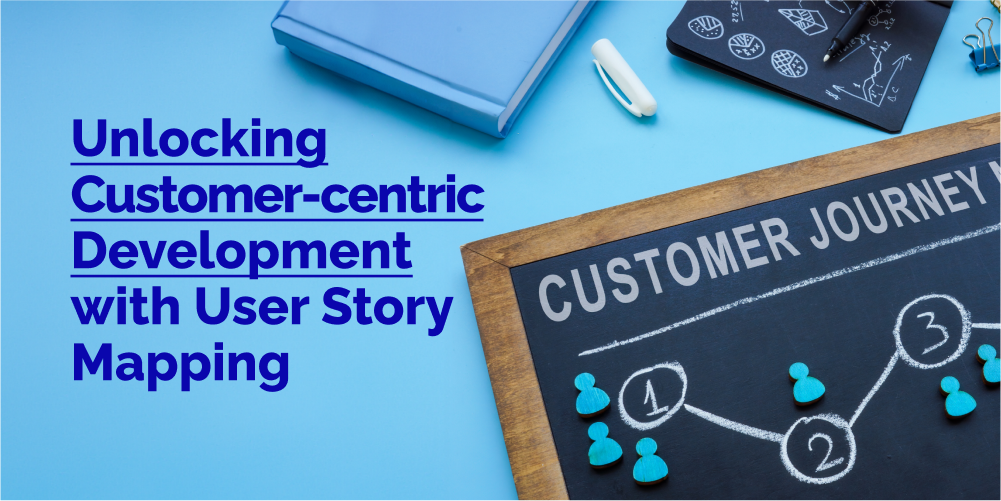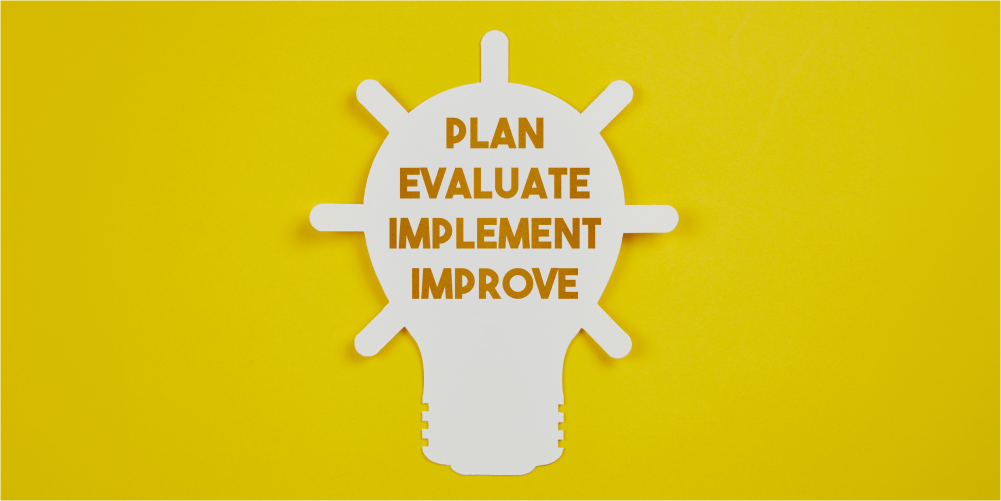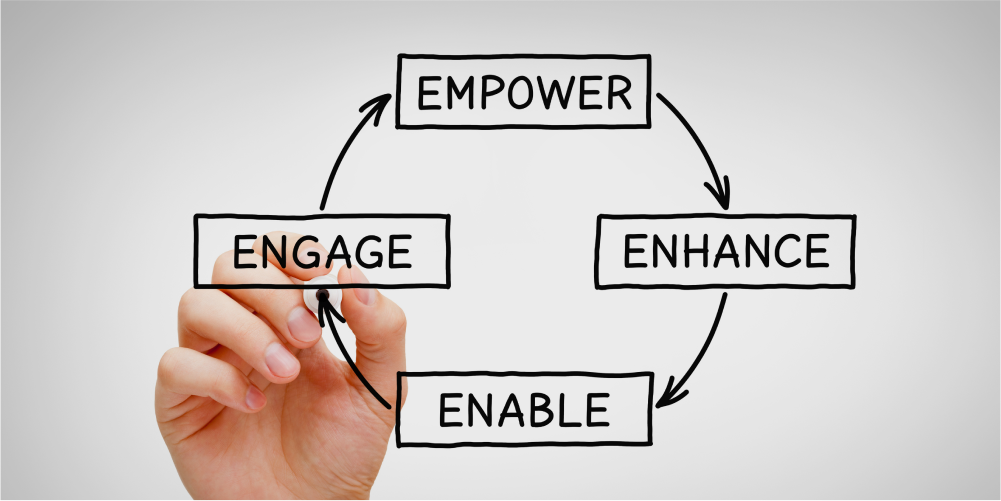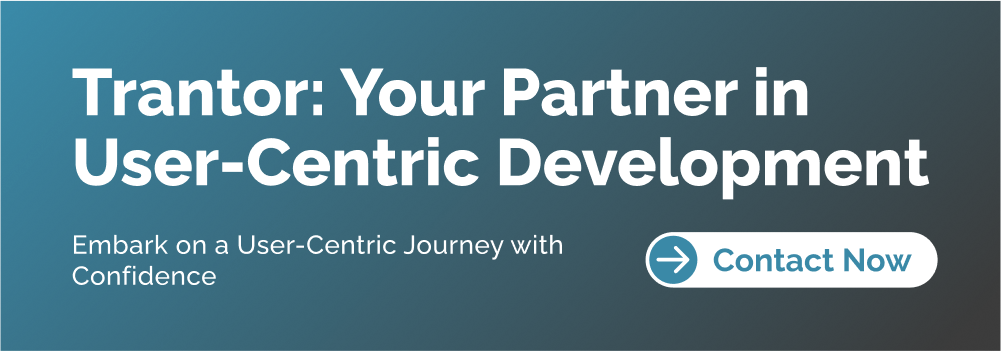Software Development, zBlog
Unlocking Customer-Centric Development: The Power of User Story Mapping

In the ever-evolving landscape of software development, delivering products that truly resonate with users and meet their needs has become paramount. Traditional development approaches often fall short of capturing the intricate nuances of user experiences, leading to disconnects between the product and its intended audience. Enter user story mapping, a powerful technique that empowers development teams to craft user-centric software by aligning features with customer journeys and desired outcomes.
User story mapping is a collaborative practice that bridges the gap between high-level product requirements and the granular tasks necessary for implementation. By visualizing the user’s journey and the corresponding functionality required, teams gain a holistic understanding of the product’s purpose and the value it aims to deliver.
The Essence of User Story Mapping

At its core, user story mapping is a structured approach to defining and organizing user stories, which are concise descriptions of a feature or functionality from the user’s perspective. Unlike traditional requirements-gathering methods, user story mapping places the user at the center, ensuring that the development process remains focused on delivering an exceptional user experience.
The user story mapping process typically begins with identifying the primary personas or user roles involved in the product. These personas represent the target users whose needs and goals the product aims to address. Next, teams explore the various activities or “jobs” that these personas need to accomplish, forming the backbone of the user journey.
With the user journey established, teams then break down each activity into individual user stories, capturing the specific tasks and functionality required to support that step of the journey. These user stories are then organized visually on a story map, providing a comprehensive view of the product’s features and their alignment with the user’s desired outcomes.
Benefits of User Story Mapping

Adopting user story mapping as a core practice in software development offers numerous benefits:
- User-Centric Mindset: By placing the user at the forefront, user story mapping fosters a user-centric mindset within development teams. This approach ensures that the product’s features are driven by actual user needs, rather than assumptions or internal priorities.
- Improved Collaboration and Alignment: User story mapping is inherently a collaborative exercise, involving cross-functional teams from product management, design, development, and stakeholders. This collaboration promotes shared understanding, alignment, and a unified vision for the product.
- Prioritization and Value Delivery: The visual representation of user stories on the story map allows teams to prioritize features based on their impact on the user journey and overall value delivery. This enables a more strategic allocation of resources and ensures that the most critical functionalities are addressed first.
- Iterative and Agile Development: User story mapping aligns seamlessly with agile development methodologies, enabling teams to tackle user stories incrementally and adapt to changing requirements or user feedback throughout the development cycle.
- Enhanced Communication and Documentation: The story map serves as a living documentation of the product’s features, user journey, and associated requirements. This improves communication among team members, stakeholders, and even new team members joining the project.
Implementing User Story Mapping

Integrating user story mapping into your development process requires a structured approach and a commitment to collaboration:
- Assemble a Cross-Functional Team: Gather a diverse team representing various roles, including product managers, designers, developers, subject matter experts, and stakeholders. This diversity of perspectives ensures a comprehensive understanding of user needs and technical considerations.
- Identify User Personas and Activities: Define the primary user personas and the key activities or “jobs” they need to accomplish with the product. This step forms the foundation of the user journey.
- Facilitate Collaborative Workshops: Conduct interactive workshops where the team collaboratively explores user stories and organizes them on the story map. Encourage open discussions, idea sharing, and prioritization based on user value.
- Continually Refine and Adapt: User story mapping is an iterative process. As development progresses, new insights may emerge, requiring the team to refine and adapt the story map accordingly. Embrace this flexibility and leverage user feedback to ensure the product remains aligned with evolving user needs.
- Integrate with Agile Methodologies: Incorporate user story mapping into your agile development practices, using the story map to plan sprints, prioritize backlogs, and track progress against the user journey.
- Foster a Culture of User-Centricity: Encourage a mindset shift within the organization, promoting a culture that values user-centric design and development. Celebrate successes, learn from challenges, and continuously improve the user story mapping process.
Embracing user story mapping is not merely a technique; it’s a transformative approach that empowers teams to deliver products that truly resonate with users. By aligning features with customer journeys and desired outcomes, organizations can foster innovation, enhance customer satisfaction, and ultimately drive business success in an increasingly competitive and user-centric market.
Integrating User Story Mapping with Agile Development

User story mapping seamlessly complements agile development methodologies, offering a powerful synergy that amplifies the benefits of both approaches. By incorporating user story mapping into agile practices, teams can enhance their ability to deliver value incrementally while maintaining a strong user-centric focus.
One of the key advantages of integrating user story mapping with agile development is the ability to prioritize and plan sprints effectively. The visual representation of the user journey and associated user stories on the story map provides a clear roadmap for implementation. Teams can easily identify the most critical user stories and prioritize them for upcoming sprints, ensuring that development efforts are focused on delivering maximum value to users.
During sprint planning sessions, the story map serves as a valuable reference, enabling teams to understand the context and impact of each user story within the broader user journey. This holistic view facilitates informed decision-making and ensures that the features being developed align with the overall product vision and user needs.
As sprints progress, the story map can be updated to reflect completed work, allowing teams to track their progress against the user journey. This transparency fosters accountability and enables teams to communicate progress effectively with stakeholders and product owners.
Moreover, user supports the iterative and incremental nature of agile development. As user feedback is gathered and new insights emerge, the story map can be refined and adapted accordingly. This flexibility ensures that the product remains responsive to evolving user needs, enabling teams to pivot and adjust their development priorities as necessary.
Enhancing User Story Mapping with Cutting-Edge Techniques

While user story mapping has proven its effectiveness in delivering user-centric software, the practice continues to evolve, incorporating cutting-edge techniques and approaches to further enhance its impact. One such technique is the integration of design thinking methodologies.
Design thinking is a human-centered approach to problem-solving that emphasizes empathy, ideation, and iterative prototyping. By combining user with design thinking principles, teams can gain deeper insights into user needs, behaviors, and motivations. Techniques such as user research, persona development, and journey mapping can enrich the user story-mapping process, ensuring that the resulting stories accurately capture the nuances of the user experience.
Another innovative approach is the incorporation of data analytics and machine learning into user story mapping. By leveraging user data, behavioral patterns, and predictive models, teams can uncover valuable insights that inform the prioritization and refinement of user stories. This data-driven approach enables teams to make informed decisions based on quantitative evidence, rather than relying solely on assumptions or qualitative feedback.
Additionally, the advent of collaborative tools and platforms has streamlined the user story mapping process, enabling remote teams to collaborate effectively and maintain a shared understanding of the product’s user journey and associated user stories. These tools often integrate with agile project management solutions, further enhancing the seamless integration of user into existing development workflows.
Conclusion
In the rapidly evolving software development landscape, user story mapping has emerged as a transformative practice that empowers teams to deliver truly user-centric products. By aligning features with customer journeys and desired outcomes, organizations can foster innovation, enhance customer satisfaction, and ultimately drive business success.
However, user is not a one-size-fits-all solution; it requires a commitment to collaboration, continuous refinement, and a mindset shift toward user-centricity. By embracing cutting-edge techniques, leveraging data-driven insights, and fostering a culture of user-focused development, organizations can unlock the full potential of user story mapping and stay ahead of the curve in an increasingly competitive and user-centric market.
Need help navigating the complexities of user-centric development? Partnering with Trantor will equip you with the strategies, techniques, and best practices necessary to unlock the full potential of user story mapping in your organization. At Trantor, we understand the power of user story mapping and its ability to transform software development processes. Our team of experienced consultants specializes in guiding organizations through the implementation and optimization of user story-mapping practices. Embrace user-centricity, foster innovation, and deliver exceptional software experiences with Trantor as your trusted partner.




